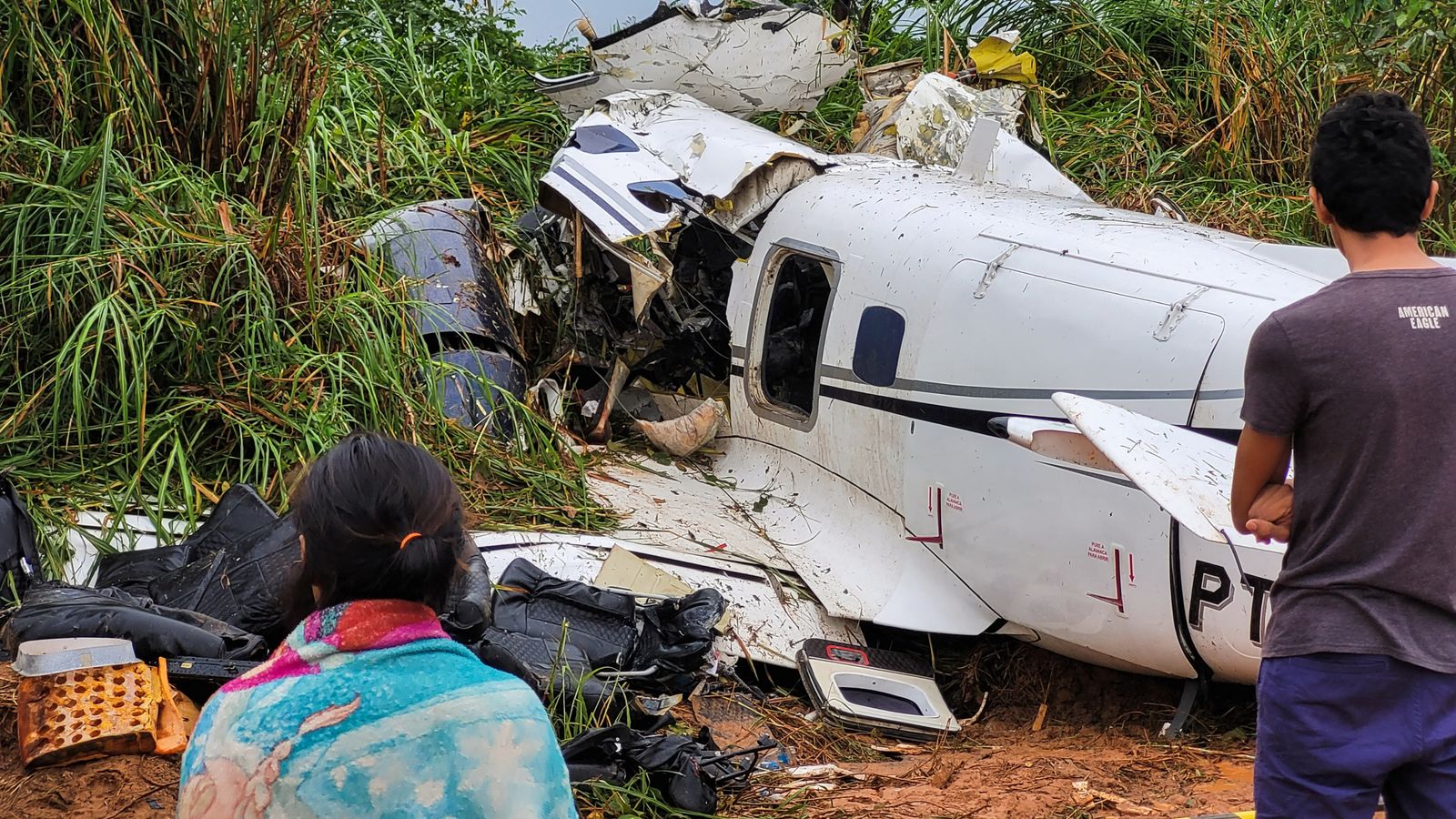Types of Plane Crashes in Brazil

Plane crashes are a tragic occurrence, and Brazil has unfortunately experienced its fair share of these incidents. Understanding the different types of plane crashes and their contributing factors is crucial for improving aviation safety and preventing future tragedies.
Breakdown of Plane Crash Types in Brazil
This section provides a detailed breakdown of the most common types of plane crashes in Brazil, examining their frequency, contributing factors, and impact.
| Crash Type | Frequency | Contributing Factors |
|---|---|---|
| Controlled Flight into Terrain (CFIT) | High | Pilot error (spatial disorientation, poor decision-making), inadequate training, lack of situational awareness, weather conditions (fog, low visibility) |
| Loss of Control (LOC) | High | Pilot error (inadequate control inputs, failure to respond to warnings), mechanical failure (engine failure, control system malfunction), adverse weather conditions (turbulence, wind shear) |
| Mid-Air Collision | Moderate | Air traffic control errors, pilot error (failure to maintain separation), weather conditions (low visibility), inadequate communication |
| Mechanical Failure | Moderate | Engine failure, structural failure, hydraulic system failure, electrical system failure, inadequate maintenance |
| Terrorism | Low | Intentional acts of violence, sabotage, hijacking |
Impact of Brazil Plane Crashes on Aviation Safety: Brazil Plane Crash Type
Plane crashes in Brazil have unfortunately been a recurring issue, raising concerns about aviation safety standards and prompting a need for comprehensive improvements. These incidents have had a significant impact on the country’s aviation sector, leading to a series of measures aimed at enhancing safety and preventing future tragedies.
Government and Aviation Authority Responses
Following these incidents, the Brazilian government and aviation authorities have taken a multifaceted approach to address the challenges. These responses have been driven by a commitment to ensuring the safety of passengers and crew, while also striving to maintain the country’s reputation as a reliable air travel destination.
- Strengthening Regulatory Frameworks: The government has implemented stricter regulations and oversight measures to improve aviation safety standards. These include revised airworthiness requirements for aircraft, enhanced pilot training programs, and stricter maintenance protocols.
- Increased Enforcement and Inspections: The National Civil Aviation Agency (ANAC) has intensified inspections and enforcement of aviation regulations, ensuring compliance with safety standards and holding airlines accountable for any violations.
- Collaboration with International Organizations: Brazil has actively engaged with international organizations like the International Civil Aviation Organization (ICAO) to learn from best practices and implement global safety standards.
- Improved Communication and Transparency: The government has focused on improving communication with the public, providing timely and accurate information about incidents and the steps taken to address them. This has helped to build trust and confidence in the aviation sector.
Specific Regulations and Protocols
The Brazilian government has implemented specific regulations and protocols to address the identified safety concerns. These measures aim to prevent similar accidents in the future by addressing key factors that have contributed to past incidents.
- Enhanced Flight Data Monitoring: Regulations have been introduced to mandate the use of flight data recorders (FDRs) and cockpit voice recorders (CVRs) on all commercial aircraft. This data is crucial for investigating accidents and identifying potential safety hazards.
- Improved Aircraft Maintenance Standards: The government has tightened regulations for aircraft maintenance, requiring airlines to adhere to stringent schedules and inspections. This ensures that aircraft are properly maintained and in safe operating condition.
- Pilot Training and Qualification Requirements: Pilot training programs have been enhanced to include more rigorous training on emergency procedures, weather conditions, and advanced flight management techniques. This ensures that pilots are better equipped to handle challenging situations.
- Air Traffic Control Modernization: Investments have been made to modernize air traffic control systems, improving communication and coordination between pilots and air traffic controllers. This reduces the risk of collisions and enhances overall safety.
Role of Technology and Training, Brazil plane crash type
Technological advancements and improved training play a critical role in enhancing aviation safety in Brazil. These measures aim to equip pilots and aviation authorities with the tools and knowledge necessary to prevent accidents and respond effectively in emergencies.
- Advanced Flight Simulation Systems: The use of sophisticated flight simulators provides pilots with realistic training scenarios, allowing them to practice handling emergencies and challenging situations in a safe and controlled environment.
- Aircraft Safety Systems: Modern aircraft are equipped with advanced safety systems, including ground proximity warning systems (GPWS), terrain awareness warning systems (TAWS), and automated flight control systems. These systems provide pilots with real-time warnings and assistance, reducing the risk of accidents.
- Data Analytics and Predictive Maintenance: Aviation authorities are increasingly leveraging data analytics to identify potential safety risks and implement proactive measures. Predictive maintenance techniques are used to anticipate potential failures and schedule timely maintenance, minimizing the risk of accidents due to mechanical issues.
The investigation into the Brazil plane crash type is complex, with multiple factors being considered. Speculation abounds about the cause, and many are wondering who will moderate the next presidential debate, as the event will likely be a hotbed for political discourse.
The debate itself could provide some insight into the ongoing investigation, as candidates may address the tragedy and its impact on the country.
The investigation into the Brazil plane crash type focused on mechanical failure, but the pilot’s decision to land in a remote area, perhaps influenced by the rugged terrain, remains a key aspect. Imagine a scenario where a pilot, facing an emergency, has to choose a landing site quickly – a comfortable, portable solution like the oztent gecko chair with table could provide a safe and stable base for communication and emergency response.
While the plane crash itself was a tragedy, understanding the circumstances and potential solutions can help prevent similar incidents in the future.

